Palmering an elk hair caddis is somewhat simpler
than Palmering a Bivisible in that the hackle is
open spiral-wrapped over a dubbed body. Many tyers
will apply all the dubbing to the thread, make one
turn of dubbing, lay in the hackle tip, and continue
dubbing the body - then wrap the hackle. That's the
quick way to do it, but I don't think it's a very
durable fly when finished, as the hackle tip is only
held to the hook shank with a couple of turns of
spongy dubbing.
A few tyers I know will tie in the hackle tip first,
dub the body, and then wrap the hackle. This, too,
is not as good because the first turn of hackle has
no protection from trout teeth, and tied-down hackle
fibers are almost always visible.
Another highly popular method is to tie in a length of
fine copper or gold wire, dub the body, and then tie
in the hackle by its butt at the shoulder of the fly.
The hackle is then wound toward the rear of the body,
followed by spiral wrapping the wire over the hackle
tip toward the hook eye. I find this to be a
time-consuming and unnecessary technique.
I prefer to apply just enough dubbing to make one
complete turn of body butt as the first step. Then
I stroke the hackle fibers near the tip and tie in the
feather...Next, I finish dubbing a soft body, and then
wrap the hackle using as much tension as the hackle stem
will allow, making one complete turn before beginning
to sprial-wrap the hackle forward. The extra tension
will bury the hackle quill into the soft dubbing, which
will protect it from trout teeth. The following photos
depict what I believe is the best way to tie a durable
Palmered-hackle caddis body. ~ AK
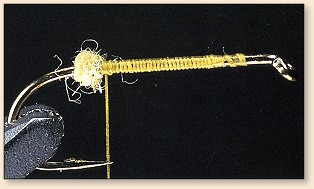
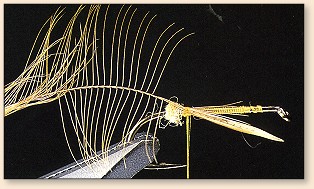
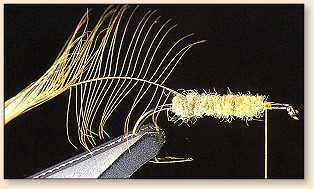
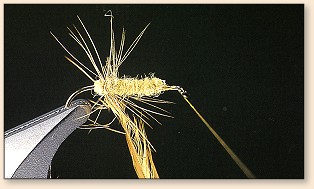
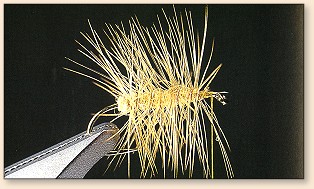
Credits: This tying tip is from
Production Fly Flying, Second
Edition by A.K. Best, published by Pruett
Publishing Company, Boulder, Colorado. We
appreciate use permission.
Please check out the Fly Tying Section, on the Bulletin Board, here at FAOL too.
If you have any questions, tips, or techniques; send them to
publisher@flyanglersonline.com
|





